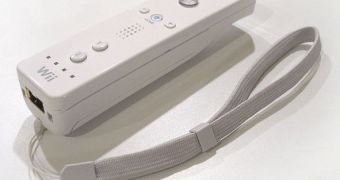With the rising popularity of the Nintendo Wii gaming console, a lot of households around the world can now boast having at least one or two Wii remotes (Wiimotes) around. Priced at around $40 each, the wireless devices may seem expensive for home use, but they are a bargain for members of the scientific community. They are using hacked versions of the device to create various types of sensors, for a total cost that is several times smaller than that regularly associated with professional sensors.
Delft University of Technology (DUT) physicist Rolf Hut managed to find a way of hacking a Wiimote and turned it into a wind sensor for practical applications. “It was just a bendy pole with an empty bottle on top with an LED light on the bottle. And it swayed in the wind,” he says of the setup used with the tracking device. HUT hydrologist William Luxemburg demonstrated that the Wiimotes could also be used to track the motions of a small boat, also outfitted with an LED. All the device needs is a bright light to follow, the experts say.
The Wiimotes seem to be apparently well fit for hydrological studies. For instance, researchers created a setup to measure how much water evaporated from a lake. This is usually notoriously hard to do, because the regular method is placing a $500 sensor in a pan filled with water, which is then set to sail on a lake, or whatever body of water is being studied. Motions of the pan spoil the readings, so scientists can never be sure they got the accurate result. A simple Wiimote is able to overcome these disadvantages because it's equipped with a tri-axial accelerometer.
It also features a high-resolution, high-speed infrared camera, which can track the movement of up to four light sources at the same time. DUT investigators created a setup in their lab in which four floating boats were adorned with an LED each, and then a Wiimote was set to survey them. With a little bit of tweaking and extra programming, the remote was able to create a plane using the four reference points, and to assess just how much water evaporated with a very high accuracy.
Similar uses for the Wiimote could also be found in material sciences and engineering. “If you have a structure that collapses and you have Wiimotes on the building, you could see how fast it falls,” Luxemburg explains, quoted by Wired.

 14 DAY TRIAL //
14 DAY TRIAL //